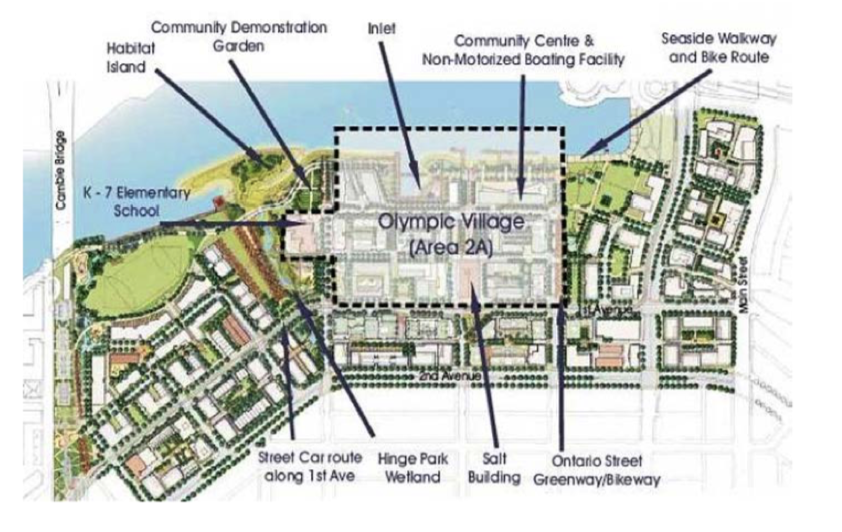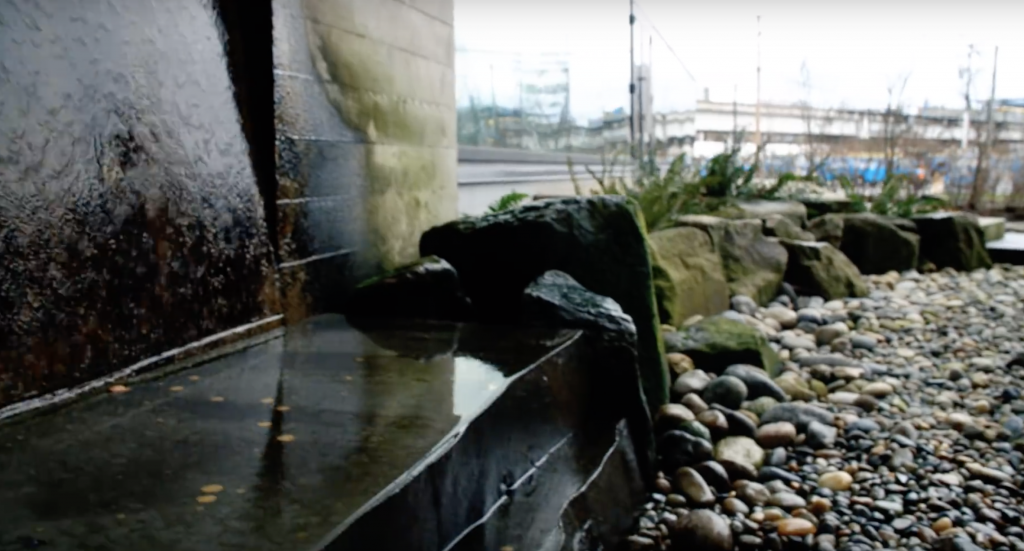As a nation we are experiencing rapid urbanization and population growth rates that have lead to a significant increase in urban development. With this increased densification comes an expansion of impermeable areas that drastically reduce the land through which water can easily be absorbed into the ground. Leaders throughout the country are recognizing this growth in urbanization and Melina Scholefield (City of Vancouver) calls us to “[reimagine] what water means in our city” (CoV, 2017). Green infrastructure defines a set of tools and practices to combat the water quality and ecological consequences of increased development. Green infrastructure practices are “effective, economical, and [enhance] community safety and quality of life” (American Rivers, 2008).
The United States Environmental Protection Agency has found that “[urban] development affects both the quantity and quality of water” by changing the natural flow of stormwater runoff in a watershed (EPA, 2018). It is clear that when rain hits impervious surfaces including roofs, streets, and parking lots, large quantities of surface runoff divert and carry pollutants that harm plants and wildlife. Green infrastructure techniques such as rain gardens, permeable soils, and green roofs mimic the natural process of the water cycle and filter out pollutants before releasing the remaining runoff to storm sewers or waterways. The aforementioned techniques generate positive water quality effects but also increase the livability of our cities. Streets and buildings are made more inhabitable by improving their aesthetic appeal as well as reducing ambient air temperatures.
The City of Vancouver (CoV) has implemented a plan of action to transform its community and become the “Greenest City” by 2020 (CoV, 2012). Known for one of the highest precipitation levels in the world, the CoV recognizes that rising precipitation is inevitable due to increased global climate change. Sir Nicholas Stern, Chief Economist for the World Bank, has “estimated that failure to tackle the climate crisis could cost the global economy $6.6 trillion a year” (CoV, 2012). The “Greenest City” action plan consists of smaller plans like the “Rain City Strategy” that in particular targets green infrastructure development in an urban environment. The CoV’s “Rain City Strategy” hopes to transform the way rainwater is managed with a goal of improving water quality and livability. The South East False Creek project is one of the leading examples of green infrastructure put into practice in the CoV.

The figure above highlights key green infrastructure elements that include:
- 100% LEED certified buildings
- Green roofs and permeable pavers
- Habitat Compensation Island
- Public parks, plazas, and gardens
Emma Luker’s report on lessons learned in the Olympic Village development provide evidence of improved water quality from the green roofs, permeable pavers, and habitat compensation island. Furthermore, the public parks, plazas, and gardens promote increased neighbourhood social interaction and provide additional community network opportunities (Luker, 2017).
Sustainable development has been adopted nationwide and cab be seen implemented by corporations that preach environmental sustainability. Mountain Equipment Co-op has displayed its commitment to environmental sustainability by installing green roofs on one of their Toronto retail locations. The state-of-the-art living roof features “planted indigenous meadow plants, flowers, and grasses that do not require frequent watering” (MEC, 2018). The figures below visualize the roof naturally passing rainwater collected on the roof to the creek below.



Additionally, the soil planted on MEC’s green roof pulls heat trapping C02 out of the atmosphere, effectively offsetting the effects of global warming as well as insulating the building to reduce heating requirements.
Green infrastructure solutions can be applied at varying scales, from a house or building level, to a broader landscape level. The restoration of the natural water cycle through green infrastructure techniques has proven to be effective and economical, and with increased urbanization green infrastructure will be at the forefront of urban sustainable development.
References
American Rivers. (2008). What is Green Infrastructure? Retrieved from https://www.americanrivers.org/threats-solutions/clean-water/green-infrastructure/what-is-green-infrastructure/
CoV. (2017). Green infrastructure: Sustainably managing our rainwater. Retrieved from https://vancouver.ca/home-property-development/green-infrastructure.aspx
CoV. (2012). Greenest City 2020 Action Plan (Rep.). Retrieved November 30, 2018, from City of Vancouver website: https://vancouver.ca/files/cov/Greenest-city-action-plan.pdf
EPA. (2018). Smart Growth and Water. Retrieved from https://www.epa.gov/smartgrowth/smart-growth-and-water#background
Luker, E. (2017). Lessons Learned from Rainwater Management Strategies Used in the Olympic Village Development(Rep.). Vancouver: Greenest City Scholars Program.
MEC. (2018). Mountain Equipment Co-op (MEC). Retrieved November 30, 2018, from http://www.greenroofs.com/projects/mountain-equipment-co-op-mec/

